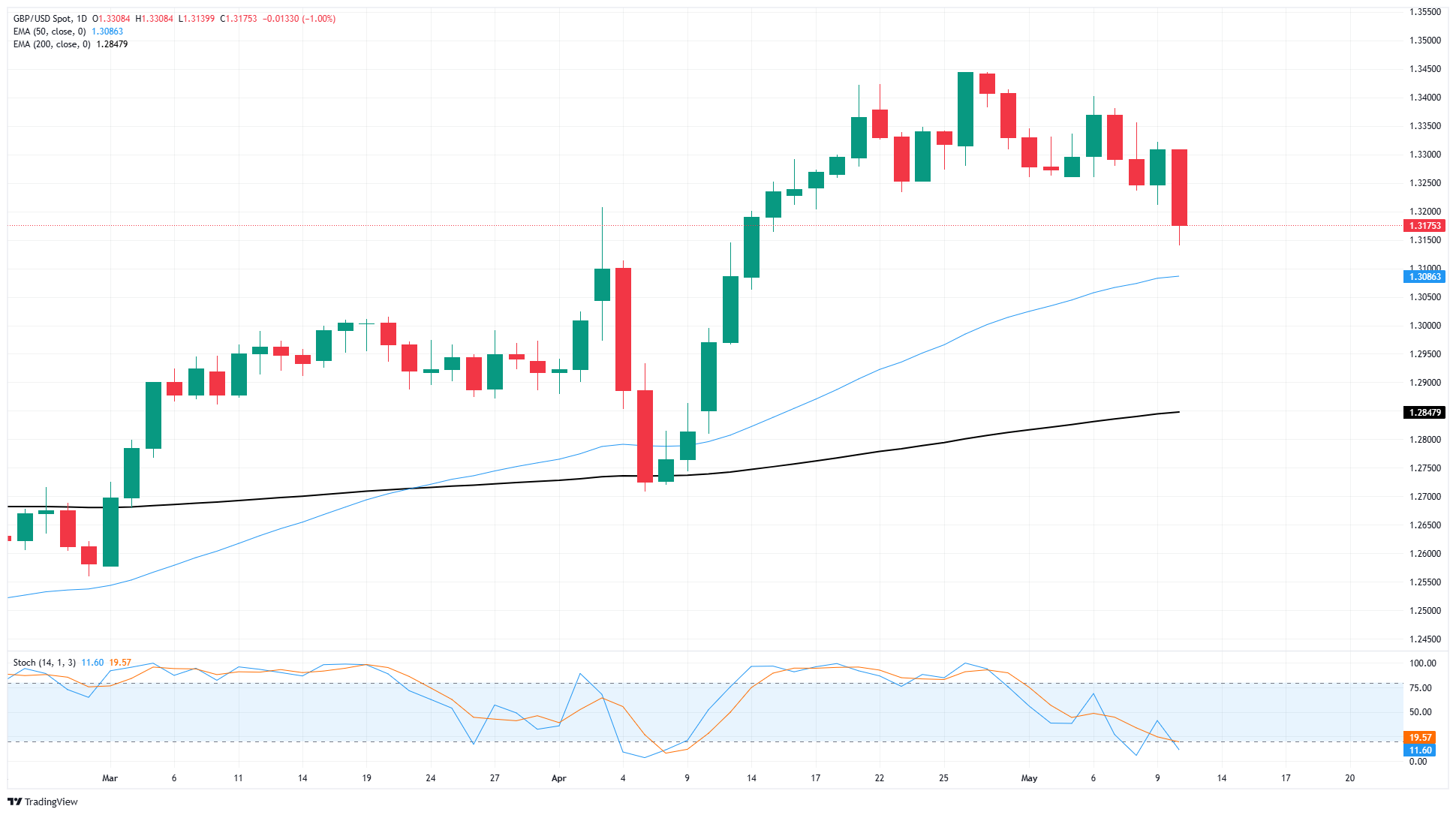GBP/USD falls back as tariff cuts bolster market sentiment
- GBP/USD declined a full 1% on Monday after US tariff walkback boosted Greenback.
- Key UK and US data looms ahead on Tuesday.
- UK labor data will be followed up by a key US CPI inflation print.
GBP/USD fell on Monday, tumbling a little over one percent and pushing the pair back down below the 1.3200 handle after a broad-based recovery in Greenback bidding. The United States (US) and China mutually agreed to temporarily suspend steep triple-digit tariffs during preliminary trade talks over the weekend, and markets have some room to breathe before the US’s bizarre “reciprocal” tariff schedule is set to come back into effect in 90 days.
Forex Today: All the attention shifts to US Inflation data
Traders will be hitting the ground running on Tuesday: a fresh batch of employment figures is due from the UK, followed by a key batch of US Consumer Price Index (CPI) inflation data due during the upcoming American market session. UK Claimant Count Change is expected to have ticked higher in April, forecast to rise to 22.3K versus March’s 18.7K print. The ILO Unemployment Rate is also expected to tick higher to 4.5% for the three months ending in March, and Average Hourly Earnings are expected to decline slightly.
US inflation data to draw plenty of eyes
US CPI inflation for April will be a hotly-watched data print on Tuesday. Headline CPI inflation in April is expected to jump to 0.3% MoM from the previous -0.1% print, and core CPI inflation is expected to rise to a matching 0.3% from 0.1%. However, core and headline inflation are expected to hold steady on an annualized basis.
GBP/USD price forecast
Despite a near-term bearish turnaround, GBP/USD holds firmly onto the bullish side. The pair is still trading on the high end of the 50-day Exponential Moving Average (EMA) near 1.3085. However, price action has slipped notably from recent highs posted north of the 1.3400 handle.
GBP/USD daily chart

Pound Sterling FAQs
The Pound Sterling (GBP) is the oldest currency in the world (886 AD) and the official currency of the United Kingdom. It is the fourth most traded unit for foreign exchange (FX) in the world, accounting for 12% of all transactions, averaging $630 billion a day, according to 2022 data. Its key trading pairs are GBP/USD, also known as ‘Cable’, which accounts for 11% of FX, GBP/JPY, or the ‘Dragon’ as it is known by traders (3%), and EUR/GBP (2%). The Pound Sterling is issued by the Bank of England (BoE).
The single most important factor influencing the value of the Pound Sterling is monetary policy decided by the Bank of England. The BoE bases its decisions on whether it has achieved its primary goal of “price stability” – a steady inflation rate of around 2%. Its primary tool for achieving this is the adjustment of interest rates. When inflation is too high, the BoE will try to rein it in by raising interest rates, making it more expensive for people and businesses to access credit. This is generally positive for GBP, as higher interest rates make the UK a more attractive place for global investors to park their money. When inflation falls too low it is a sign economic growth is slowing. In this scenario, the BoE will consider lowering interest rates to cheapen credit so businesses will borrow more to invest in growth-generating projects.
Data releases gauge the health of the economy and can impact the value of the Pound Sterling. Indicators such as GDP, Manufacturing and Services PMIs, and employment can all influence the direction of the GBP. A strong economy is good for Sterling. Not only does it attract more foreign investment but it may encourage the BoE to put up interest rates, which will directly strengthen GBP. Otherwise, if economic data is weak, the Pound Sterling is likely to fall.
Another significant data release for the Pound Sterling is the Trade Balance. This indicator measures the difference between what a country earns from its exports and what it spends on imports over a given period. If a country produces highly sought-after exports, its currency will benefit purely from the extra demand created from foreign buyers seeking to purchase these goods. Therefore, a positive net Trade Balance strengthens a currency and vice versa for a negative balance.
